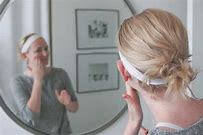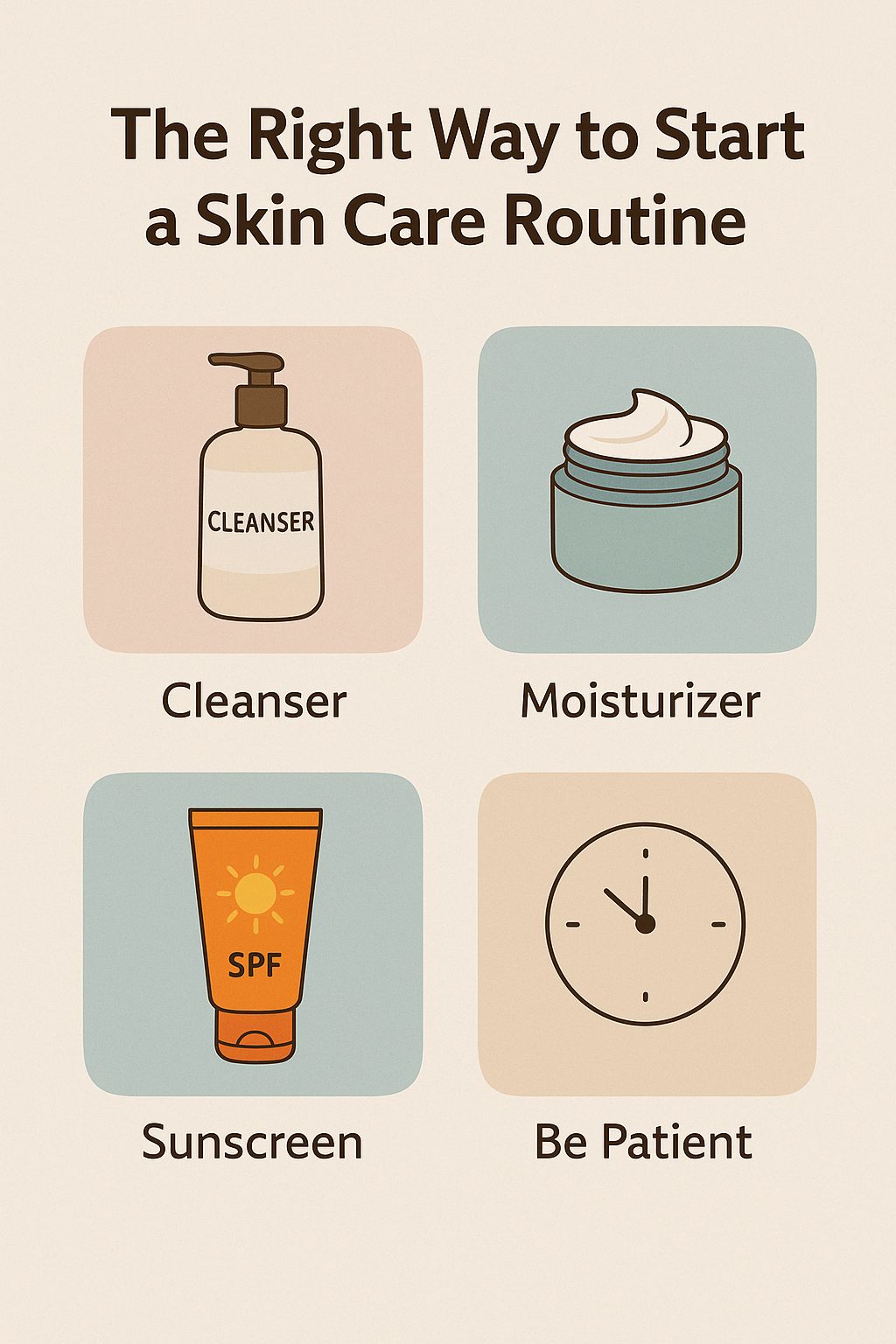Starting a skincare routine can feel overwhelming, especially with so many products and advice out there. Whether you’re a teenager just beginning to care for your skin or an adult looking to refresh your regimen, understanding the basics can make the journey much simpler. In this guide, we’ll walk through the essential steps to start a skincare routine the right way — no confusion, just clear and simple advice.

Understanding Your Skin Type
Before you pick up any product, it’s important to know your skin type. Everyone’s skin is different, and understanding yours helps you choose the right products. Skin types generally fall into five categories: normal, dry, oily, combination, and sensitive Normal skin feels balanced, neither too oily nor too dry.
- Dry skin often feels tight, rough, or flaky.
- Oily skin tends to be shiny and prone to breakouts.
- Combination skin has both dry and oily areas, usually oily in the T-zone (forehead, nose, and chin).
- Sensitive skin easily gets irritated, red, or itchy.
Knowing your skin type will guide you to products that suit your skin’s needs, preventing issues like breakouts or dryness.
Start with a Gentle Cleanser
A good skincare routine always begins with cleansing. Cleansing removes dirt, oil, and impurities that build up on your skin throughout the day. Choose a gentle, fragrance-free cleanser suited to your skin type.
For oily or acne-prone skin, a foaming cleanser with salicylic acid can be helpful. For dry or sensitive skin, a creamy, hydrating cleanser is ideal. Always cleanse your face twice a day — once in the morning and once before bed .
Don’t Skip Moisturiser
Many people think moisturisers are only for dry skin, but every skin type needs hydration. Moisturiser helps protect your skin’s natural barrier and locks in moisture. For oily skin, opt for a lightweight, non-comedogenic (won’t clog pores) moisturiser. Dry skin benefits from thicker creams that provide extra hydration. If you have sensitive skin, look for soothing ingredients like aloe vera or ceramides .
Sun Protection is a Must
Sunscreen is perhaps the most crucial step in any skincare routine. UV rays from the sun can cause premature ageing, dark spots, and increase the risk of skin cancer. Dermatologists recommend using a broad-spectrum sunscreen with at least SPF 30 every day, even when it’s cloudy or you’re indoors .
Apply sunscreen as the final step in your morning routine, after your moisturiser. Reapply every two hours if you’re outdoors.
Start Simple — Then Add Products Gradually
It’s tempting to buy a bunch of products when starting, but it’s best to keep your routine simple at first: cleanse, moisturise, and protect. Once you establish a habit, you can slowly add products like serums, exfoliators, and eye creams based on your specific concerns.
For example, if you want to target dark spots, you might add a vitamin C serum. If wrinkles are a concern, a retinol product could be beneficial. However, it’s important to introduce one new product at a time to monitor how your skin reacts.
Be Patient and Consistent
Good skin doesn’t happen overnight. It can take weeks — sometimes even months — for skincare products to show results. Consistency is key. Stick to your routine every day and give your products time to work. Avoid switching products too frequently, as this can irritate the skin and prevent you from seeing true results.
Importance of Patch Testing
Whenever you try a new product, it’s wise to do a patch test first. Apply a small amount of the product to a discreet area, like behind your ear or on your wrist, and wait 24-48 hours. This helps you see if you have an allergic reaction before applying it all over your face .
Patch testing is especially important if you have sensitive skin or are trying active ingredients like retinol or acids.
Lifestyle Matters Too
Healthy skin isn’t just about what you put on your face — it’s also about your overall lifestyle. Eating a balanced diet rich in fruits and vegetables, drinking plenty of water, getting enough sleep, and managing stress all contribute to a healthy, glowing complexion. Smoking and excessive alcohol can have negative effects on your skin’s appearance and health .
Customise for Age and Changing Needs
Your skincare needs will change over time. Teenagers may focus more on acne control, while adults might prioritise anti-ageing products. As you age, skin tends to become drier, and you might need richer moisturisers and gentler cleansers. Always listen to your skin and adjust your routine as needed.
Common Mistakes to Avoid
When starting a skincare routine, it’s easy to make mistakes. Here are a few to watch out for:
- Over-exfoliating: Scrubbing too often can damage your skin barrier and irritate it. Limit exfoliation to 1-2 times per week.
- Skipping sunscreen: This is non-negotiable, even if you’re indoors most of the day.
- Using too many active ingredients at once: Combining ingredients like retinol, vitamin C, and acids without guidance can lead to irritation.
- Not removing makeup properly: Always thoroughly cleanse your face to avoid clogged pores and breakouts.
- Expecting instant results: Skin improvements take time, so be patient and consistent.
Final Thoughts
Starting a skincare routine doesn’t have to be complicated. Focus on the basics: cleanse, moisturise, and protect. Understand your skin’s needs, introduce products slowly, and remember that consistency is your best friend. Healthy, glowing skin is achievable for everyone — it just takes a little care and patience.
The Best Way to Manage Study During Holidays
References
- American Academy of Dermatology Association – Skin Type Information
- Mayo Clinic – Skin Care Basics
- Healthline – How to Build a Skincare Routine
- Skin Cancer Foundation – Sunscreen Information
- Cleveland Clinic – Building a Skincare Routine
- Dermatology Times – Importance of Patch Testing
- Harvard Health Publishing – Skin Health and Lifestyle

